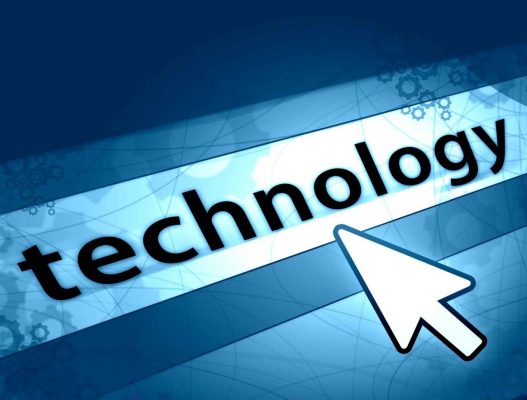Shortly after his appointment as Minister of State, Petroleum Resources by President Muhammadu Buhari, Ibe Kachikwu gave the Department of Petroleum Resources (DPR)’s management the task of reforming the oil and gas industry to enhance transparency and accountability, restore public and investors’ confidence and set a frame work that would change the pace of managing and administering the industry hinged on global best practices.
This reinforced the need for innovative policy interventions that can quickly be introduced and implemented with potential for high positive impact. Management felt challenged and immediately went to work as to finding an excellent and proven system of tracking every vessel and volume of crude oil leaving Nigeria to the spot markets and other parts of the world.
“This was achieved using Automatic Identification System (AIS) to track maritime vessels (i.e ocean going vessels) carrying commodities; knowing exactly how much volume is being shipped across the globe and by whom in Real- Time.”
Osu said with the new devise, the seaborne flows were analysed cargo by cargo revealing hidden patterns and trends in the market which could otherwise go unnoticed.
The crude oil and LNG Tracking system provide data on vessel operations and movement which includes but not limited to loading, cargo details, ship details, destinations (country/continent), discharges and trade activities.
“Today, every molecule of crude oil produced in Nigeria and the quantity loaded is known and tracked to final destination including stopovers with applicable discharges. Similarly, information on imported cargos into Nigeria can also be accessed in real time. The system, very interestingly demonstrated the ability to track and identify “Rogue” or “Dark” ships on the real-time map.
“DPR is keenly interested in tracking and monitoring vessels in the Niger Delta area to deter those that are there without authorization or without signals. To aid DPR’s efforts, the Minister of State, Petroleum Resources has directed the establishment of an inter-agency forensic team that can investigate further any vessel with suspicious movements in the Nigerian territorial waters in collaboration with relevant agencies,” he stressed
The National Production Management System (NPMS) is one of the prominent projects put in place to facilitate the transmission of upstream (oil and gas) production data to the DPR on a daily basis. The system is a process for the submission and gathering of oil and gas production data, export data, and other data in the industry that improves on transparency in hydrocarbon accounting in Nigeria and the revenue generated therefrom. It enables accurate hydrocarbon production and export figures monitoring and ensures consistency and quality of data published by the Department of Petroleum Resources. The online gathering of data is achieved through the corporate databases of the oil and gas operations, DPR offices at the terminals and meters installed at onshore and offshore terminals. This project kicked off in 2009 and has since been operational.
In 2016, the NPMS platform was expanded and upgraded to enable it to achieve real-time data gathering and monitoring of oil production in active fields in Nigeria. The department proposed a complete roll out of the real-time upgrade in all 26 oil terminals by mid-2019. Currently, 9 terminal locations are successfully transmitting real-time data, while the remaining 17 terminals locations are at different levels of installation and system integration.
The Head, Public Affairs said: “I stand bold here to tell fellow Nigerians that our daily national crude oil production from nine terminals is captured in real time across DPR offices via web access.
“In the same vein, the regulatory agency has launched Automated Downstream System (ADS) designed to change all internal regulatory processes of licensing across the value chain to an online system. This is to reduce approval cycle, enhance transparency, eliminate corrupt practices and accelerate ease of doing business.
“The following systems and processes have already been launched and are all active and available to industry players and general public: Coastal Vessel Licensing portal, Lube Blending plants Licensing portal; Retail Outlets Marketing (ROMS) Licensing portal; Industrial Consumers, Filling stations, Kerosene, Crude Oil Export Licensing portal; hydrocarbon Processing Plants Licensing portal as well as minimum Industry Safety Training for Downstream Operators (MISTDO) Licensing portal.
“To also enhance operational efficiency and excellence in monitoring downstream operation, Smart Inspector (inspection App) was launched to provide technology enablement for our engineers for inspection and audit processes,” he stated.
Osu noted that in order to cut costs and limit the cost of crude oil production, DPR launched Value Monitoring and Benchmarking (VMB), designed to provide cost monitoring platform that will allow benchmarking of upstream cost elements to aid investment decisions and national planning. The initiative is hinged on policy aspiration on reducing cost of production in the industry which has been launched and data upload by industry players has commenced in earnest.
Fiscal Payment Administration System (FisPAS) is another initiative to enhance assessment and collection of revenue streams mainly royalties, concession rental and miscellaneous revenues by industry players. It provides an exchange where revenue payments are reported, reconciliations are done and reporting of payments and receipts is enhanced to facilitate revenue generation for the federation while Accelerated Lease Renewal Programme is hinged on the provisions of the Petroleum Act LFN 2004 which mandates the holder of an Oil Mining Lease to apply for the renewal of the lease at least one year to the expiration of the lease.
Source : https://www.dailytrust.com.ng


